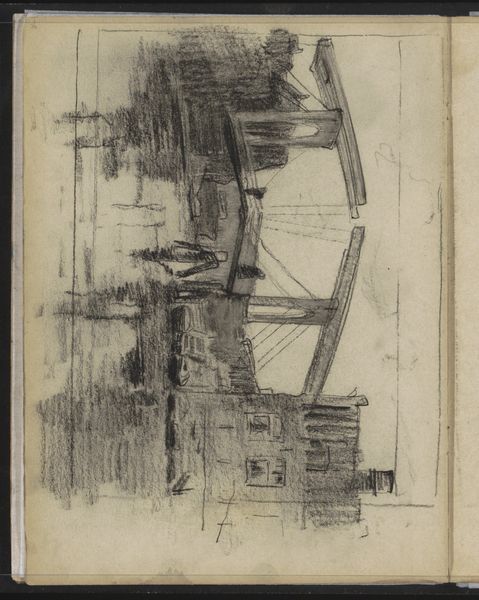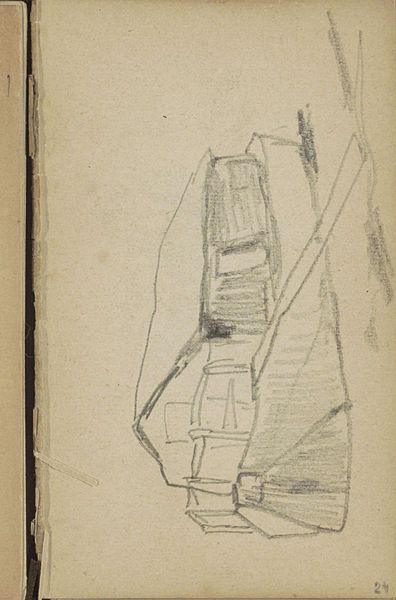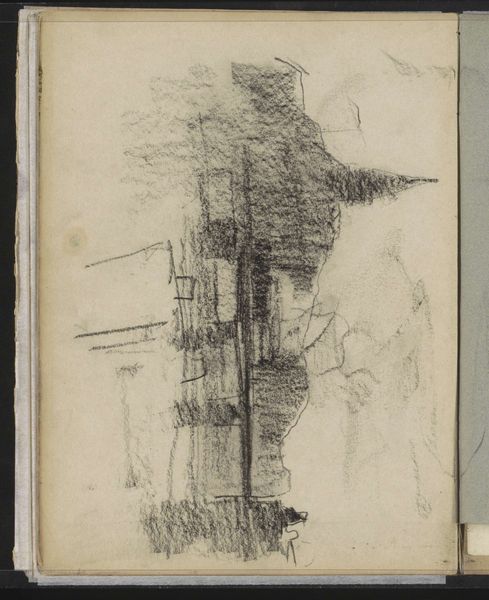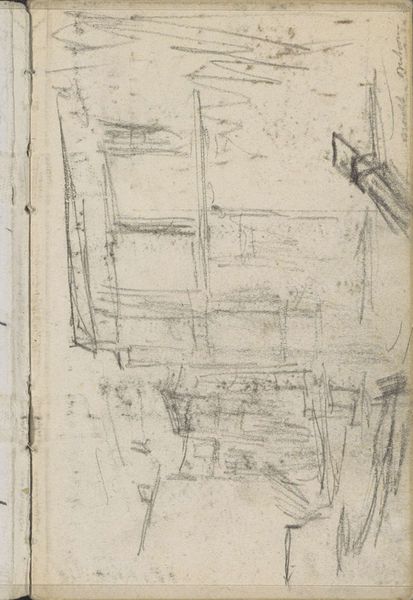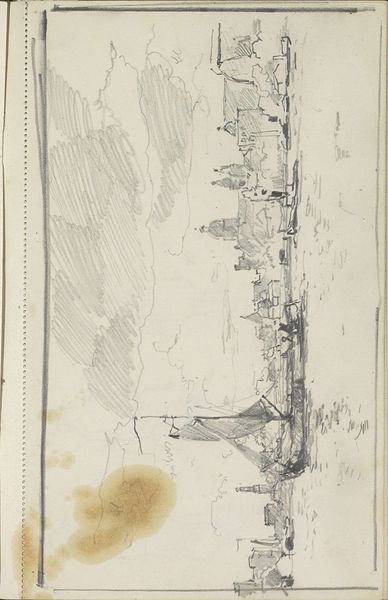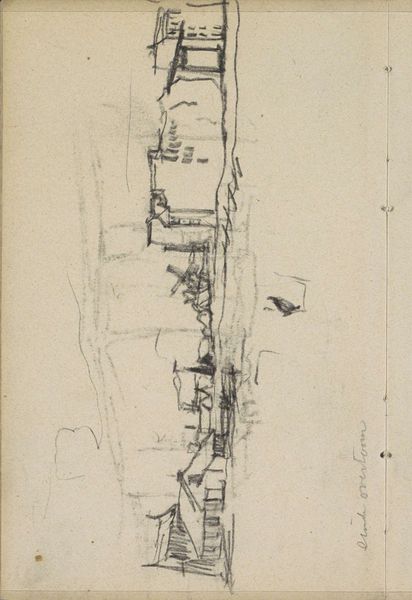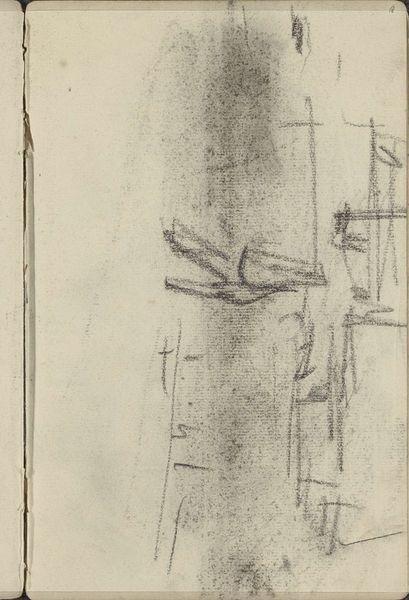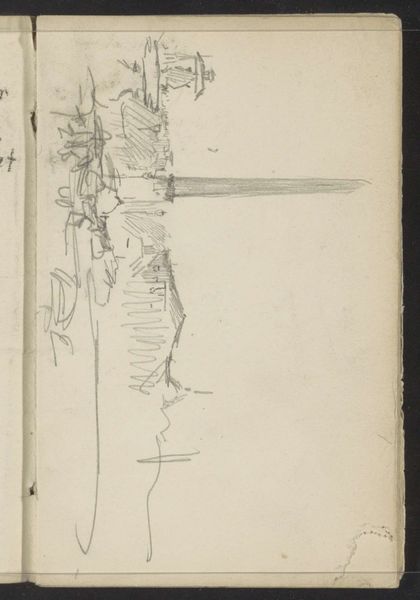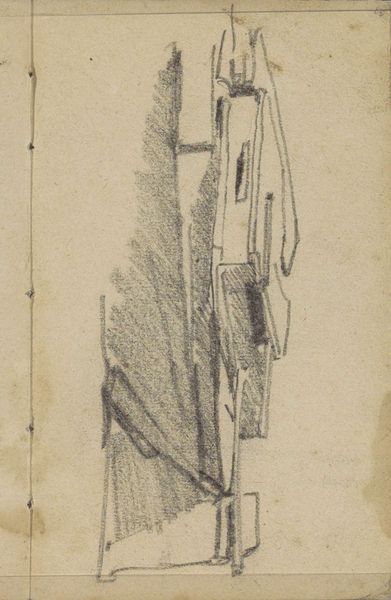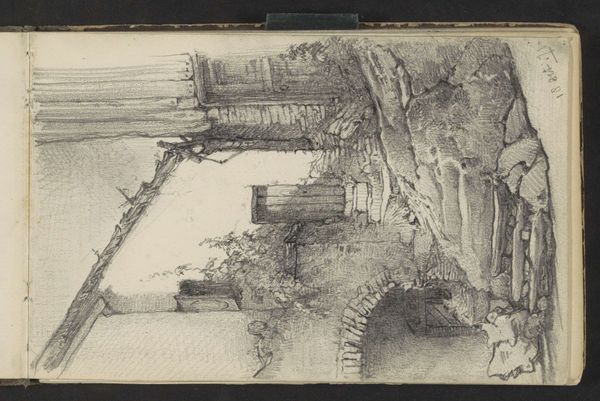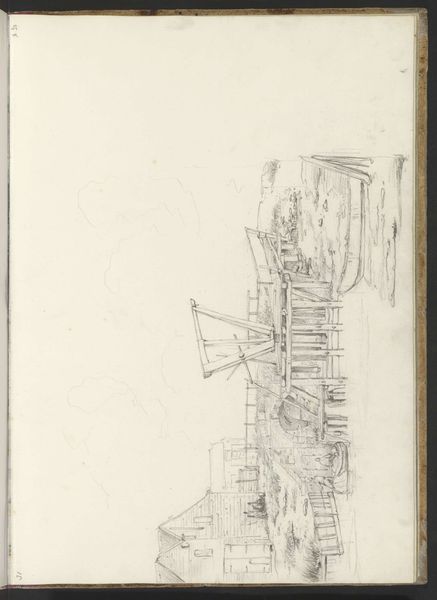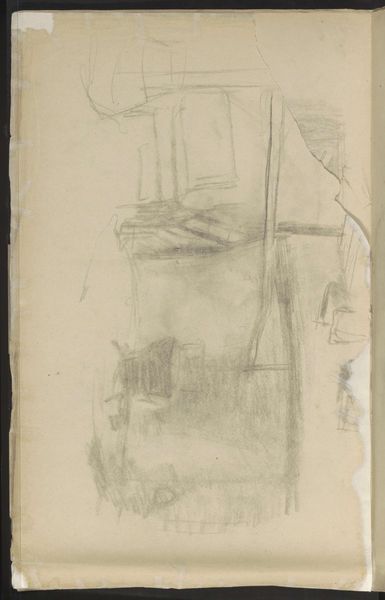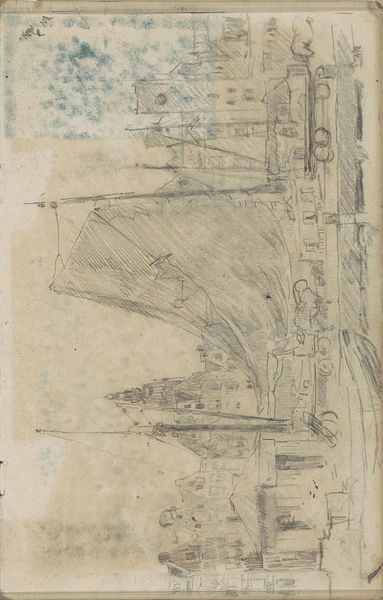
drawing, pencil, graphite
#
drawing
#
impressionism
#
sketch book
#
pencil
#
graphite
#
cityscape
#
watercolor
Copyright: Rijks Museum: Open Domain
Curator: Looking at this pencil and graphite drawing by Willem Witsen, titled “View of Charing Cross Bridge in London”, created between 1888 and 1890, I’m immediately struck by the dense hatching that creates a looming structure on the page. Editor: It’s chaotic. All that raw, frenzied energy – it gives off a distinctly unsettling vibe, doesn't it? You sense the Industrial Revolution's impact, that feeling of the city closing in, oppressive almost. Curator: Well, consider how pencil, as a readily available material, allowed artists like Witsen to rapidly capture the changing urban landscape. He wasn’t precious with the graphite here; he was interested in quickly fixing a moment, an impression. It mirrors the ephemeral experience of city life itself. Editor: True, and think about who was building those bridges, using those railways. Class structures were being reinforced, dividing those who profited from industry and those who literally built it. Witsen's rendering, while aesthetically Impressionistic, visually points at the harsh realities of labor and class in Victorian London. Curator: Absolutely. The bridge becomes almost monstrous because it represents both progress and its underside. Witsen’s mark-making here communicates so much of the anxieties of that time and its evolving sense of scale. Look at the weight of that structure conveyed through line. Editor: And also about who has the means and time for artistic representation. While there are no actual people depicted in the work, their social and economic situations inform our interpretation and the very existence of a "cityscape" to capture on paper. Curator: These loose pencil sketches give us something intimate, offering us a look into the artistic process itself. The layering effect, almost like looking through a fogged window, renders Charing Cross in an atmosphere both haunting and suggestive. Editor: Well, Witsen, through this drawing, opens up the space to question labor relations, the rapid shifts in urban environments and how progress affects people across all sectors of society. Curator: Seeing how Witsen worked with a readily accessible medium to convey a complex historical subject reminds me about the transformative possibilities of a single drawing. Editor: And it’s important for us to also observe what is revealed—and concealed—in this single, intimate perspective and in larger representations of societal shifts, industrial labor, and class divisions in cities like London at the height of empire.
Comments
No comments
Be the first to comment and join the conversation on the ultimate creative platform.
